We recently interviewed Mark McIntyre on how he uses Fedora. This is part of a series on the Fedora Magazine. The series profiles Fedora users and how they use Fedora to get things done. Contact us on the feedback form to express your interest in becoming a interviewee.
Who is Mark McIntyre?
Mark McIntyre is a geek by birth and Linux by choice. “I started coding at the early age of 13 learning BASIC on my own and finding the excitement of programming which led me down a path of becoming a professional coder,” he says. McIntyre and his niece are big fans of pizza. “My niece and I started a quest last fall to try as many of the pizza joints in Knoxville. You can read about our progress at https://knox-pizza-quest.blogspot.com/” Mark is also an amateur photographer and publishes his images on Flickr.

Mark has a diverse background as a developer. He has worked with Visual Basic for Applications, LotusScript, Oracle’s PL/SQL, Tcl/Tk and Python with Django as the framework. His strongest skill is Python which he uses in his current job as a systems engineer. “I am using Python on a regular basis. As my job is morphing into more of an automation engineer, that became more frequent.”
McIntyre is a self-described nerd and loves sci-fi movies, but his favorite movie falls out of that genre. “As much as I am a nerd and love the Star Trek and Star Wars and related movies, the movie Glory is probably my favorite of all time.” He also mentioned that Serenity was a fantastic follow-up to a great TV series.
Mark values humility, knowledge and graciousness in others. He appreciates people who act based on understanding the situation that other people are in. “If you add a decision to serve another, you have the basis for someone you’d want to be around instead of someone who you have to tolerate.”
McIntyre works for Scripps Networks Interactive, which is the parent company for HGTV, Food Network, Travel Channel, DIY, GAC, and several other cable channels. “Currently, I function as a systems engineer for the non-linear video content, which is all the media purposed for online consumption.” He supports a few development teams who write applications to publish the linear video from cable TV into the online formats such as Amazon and Hulu. The systems include both on-premise and cloud systems. Mark also develops automation tools for deploying these applications primarily to a cloud infrastructure.
The Fedora community
Mark describes the Fedora community as an active community filled with people who enjoy life as Fedora users. “From designers to packagers, this group is still very active and feels alive.” McIntyre continues, “That gives me a sense of confidence in the operating system.”
He started frequenting the #fedora channel on IRC around 2002: “Back then, Wi-Fi functionality was still done a lot by hand in starting the adapter and configuring the modules.” In order to get his Wi-Fi working he had to recompile the Fedora kernel. Shortly after, he started helping others in the #fedora channel.
McIntyre encourages others to get involved in the Fedora Community. “There are many different areas of opportunity in which to be involved. Front-end design, testing deployments, development, packaging of applications, and new technology implementation.” He recommends picking an area of interest and asking questions of that group. “There are many opportunities available to jump in to contribute.”
He credits a fellow community member with helping him get started: “Ben Williams was very helpful in my first encounters with Fedora, helping me with some of my first installation rough patches in the #fedora support channel.” Ben also encouraged Mark to become an Ambassador.
What hardware and software?
McIntyre uses Fedora Linux on all his laptops and desktops. On servers he chooses CentOS, due to the longer support lifecycle. His current desktop is self-built and equipped with an Intel Core i5 processor, 32 GB of RAM and 2 TB of disk space. “I have a 4K monitor attached which gives me plenty of room for viewing all my applications at once.” His current work laptop is a Dell Inspiron 2-in-1 13-inch laptop with 16 GB RAM and a 525 GB m.2 SSD.
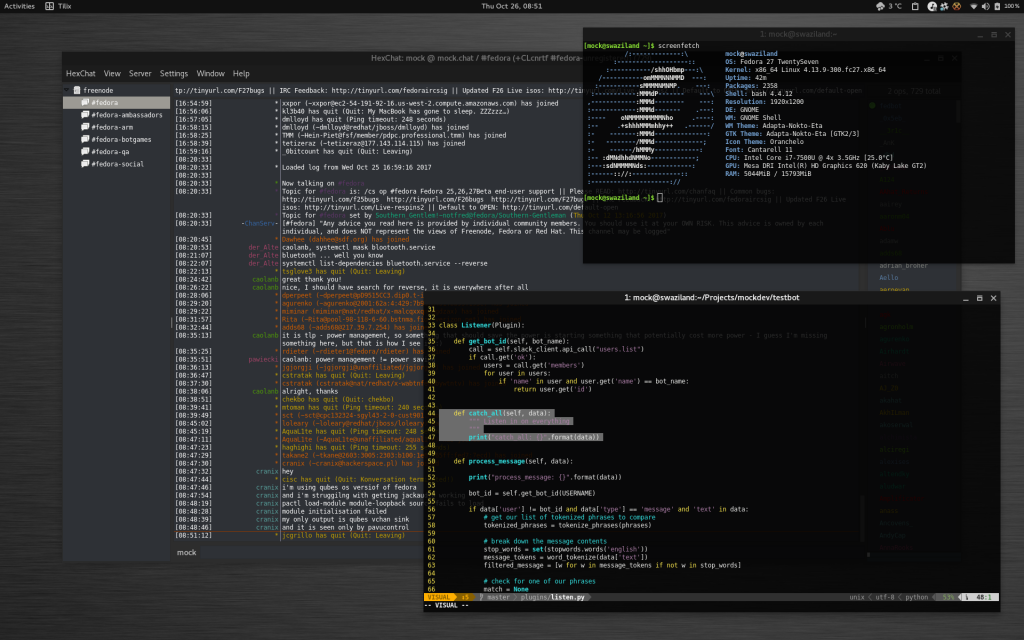
Mark currently runs Fedora 26 on any box he setup in the past few months. When it comes to new versions he likes to avoid the rush when the version is officially released. “I usually try to get the latest version as soon as it goes gold, with the exception of one of my workstations running the next version’s beta when it is closer to release.” He usually upgrades in place: “The in-place upgrade using dnf system-upgrade works very well these days.”
To handle his photography, McIntyre uses GIMP and Darktable, along with a few other photo viewing and quick editing packages. When not using web-based email, he uses Geary along with GNOME Calendar. Mark’s IRC client of choice is HexChat connecting to a ZNC bouncer running on a Fedora Server instance. His department’s communication is handled via Slack.
“I have never really been a big IDE fan, so I spend time in vim for most of my editing.” Occasionally, he opens up a simple text editor like gedit or xed. Mark uses GPaste for copying and pasting. “I have become a big fan of Tilix for my terminal choice.” McIntyre manages the podcasts he likes with Rhythmbox, and uses Epiphany for quick web lookups.









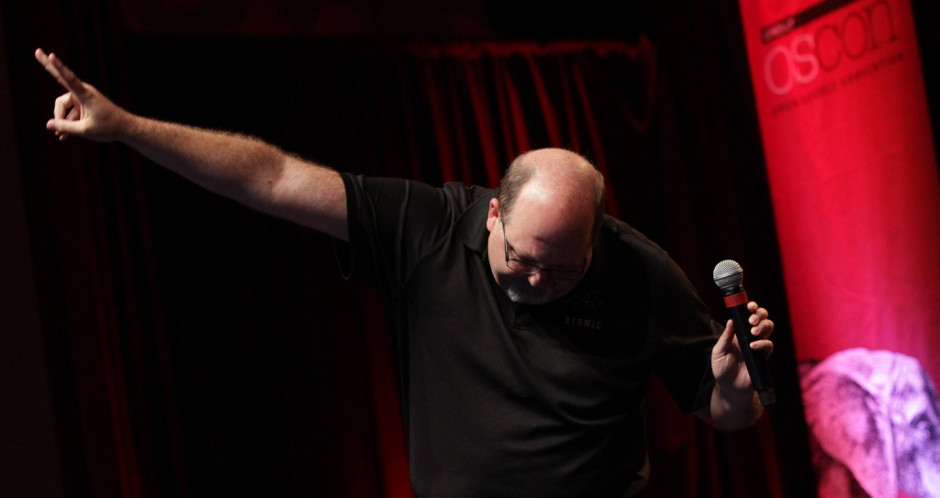


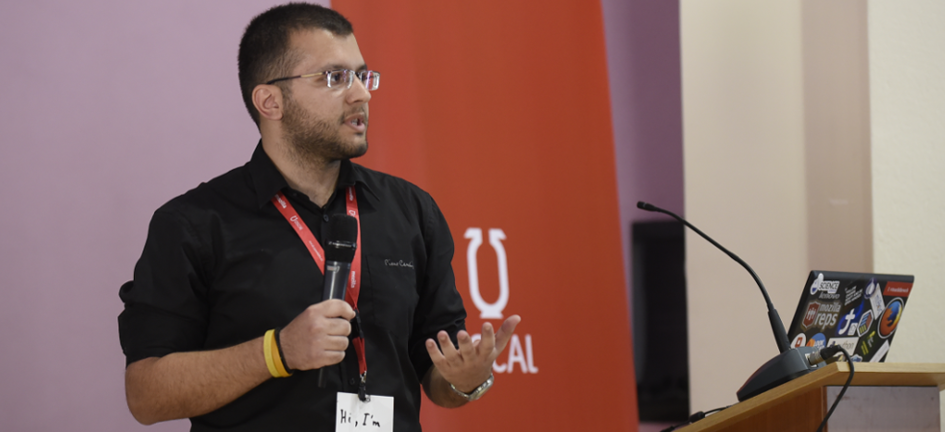



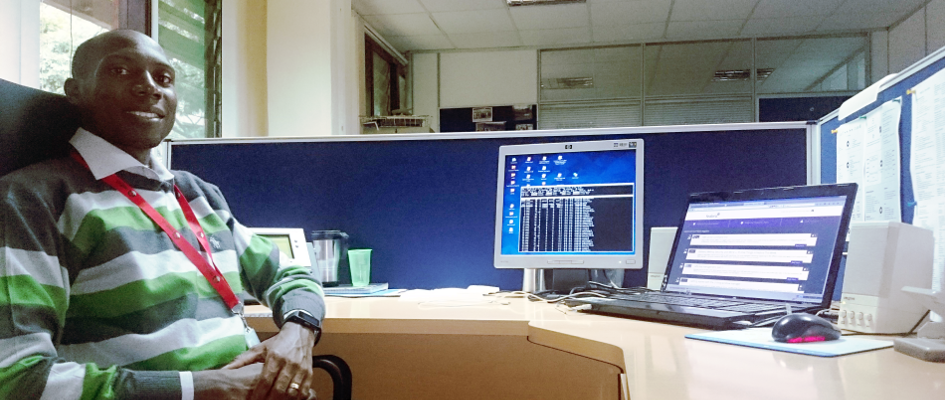
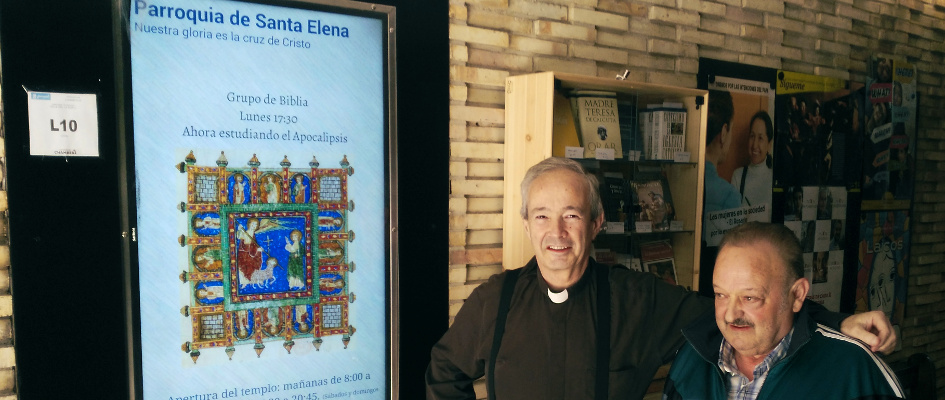

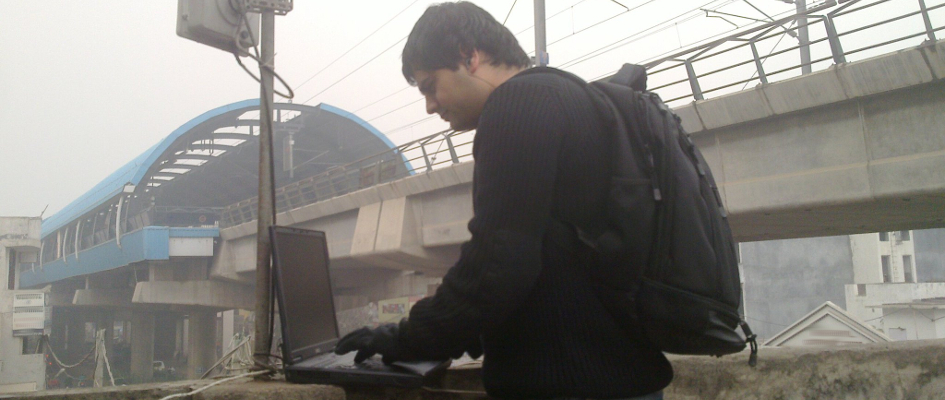
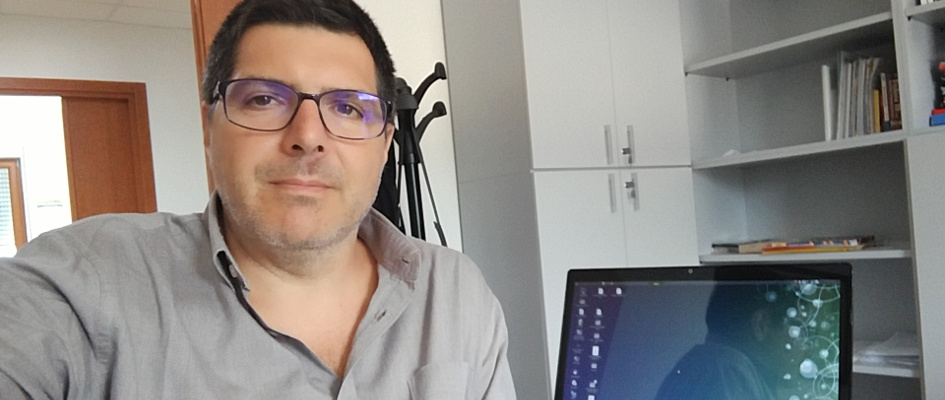





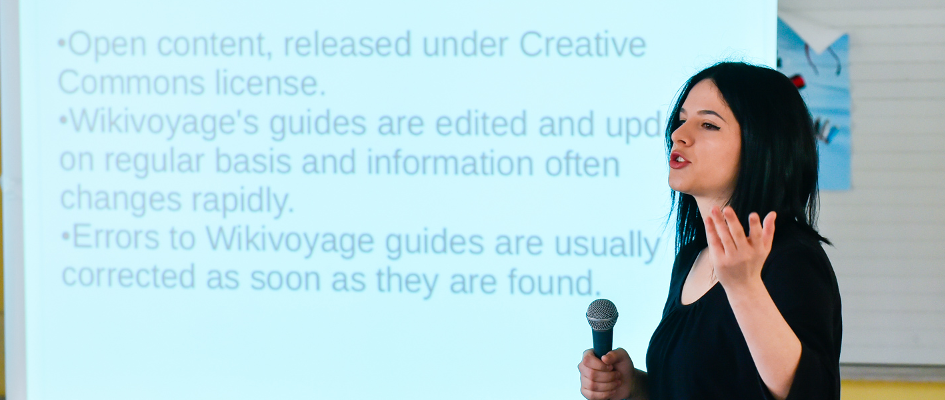

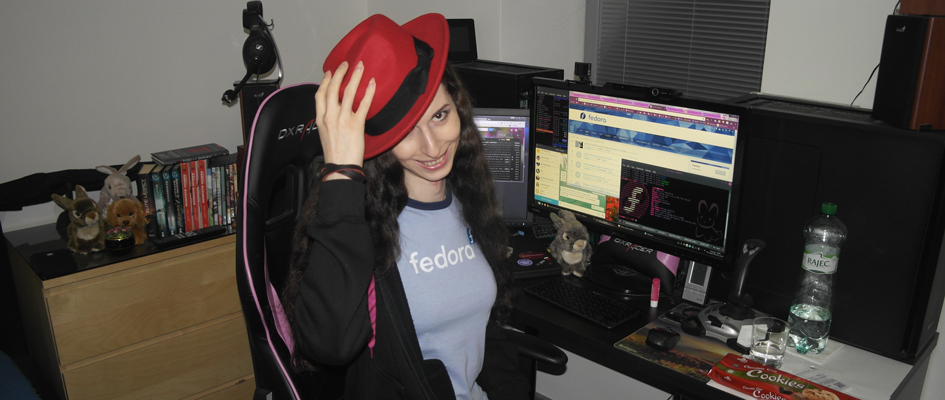
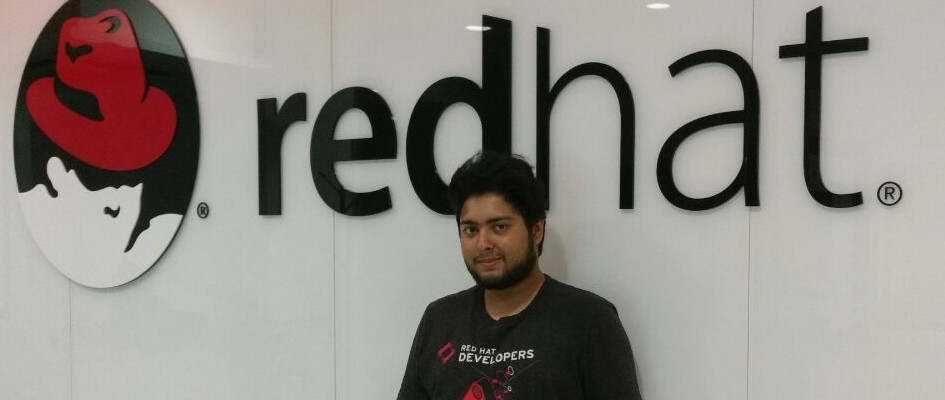

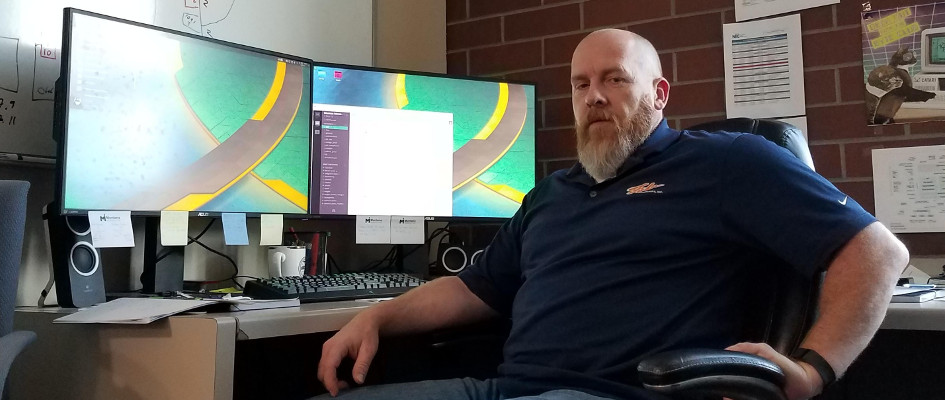










Ken
Yay pizza and stuff!
Regarding WiFi, is there a correct way to get Network Manager to put an AP in a bridge along with a wired interface? That is the configuration typical Wifi routers use. I have a script to do that using hostapd and nmcli but it’s not clean.
The WPA2 KRACK vulnerability made me switch to using Fedora 26 and later 27 as a replacement for a dedicated router as vendors are lagging on firmware updates.
Thanks
Chad
And I thought I was the only one in the Knoxville area pounding out Linux at home!
mark mcintrye
you are not alone. i have a few guys at work who have installed it on laptops, but i don’t know how many more beyond my small group. are you a member of the knoxdevs slack account?
Mehdi
Can anyone tell me how to display that big Fedora Logo in terminal window?
Ryan Lerch
I believe it is a utility called
Giovanni
What theme for gnome-shell does it use?
mark mcintrye
i have been using a couple, although i switched it up after this screenshot. currently, i’m rocking the deepin window decorations with the Flat-Remix-Dark as my shell (since deepin doesn’t have a shell theme).
in the screenshot, i was using Adapta-Nokto-Eta for both windows and shell. you can find that theme here: https://github.com/jayarc/Adaptdark.git
Rev. Aldea Silvarahawk
my wife and I are fedora users too. She just will not use anyother system. ever sence she worked to get back ground theme that wanted as her wallpaper in/on her yahoody account as she calls it, that was back under a 1998 software os we just leave it that. Well I finelly got her to let me load fedora core three on it. and as I clicked on firefox and typed yahoo.com/login she did the login and got her beloved wall paper as yahoo loaded up. OH! WOW! It was great to watch her eyes and face light up. We got married that next May. She just helps people to get genealogy for them always free as the best in live comes freely, as she say it. I do local Astrom~ spot finding for classes via Kstars and two other programs to yeild the static data for the young to use and get into their own Astr~thing too. as these amature classes which also free to go to and do the viewings for. So do I do for them. We are both retired and past our seventies too. My winter time working building a visual ASSEMBLER IDE. it is slow work due to our helpping in the church as well. but I’m getting it done. Also working on Dark E & M having to build math engine to do fully digit places without short hand science notations I’m looking for the names past google plex too. I just finished loading Fedora 27 Xfce, got to reboot now by the way we live in Sweet Water Tennessee ” Hawk ” Thanks
kuylim
It ‘s really nice.
How can I become the part of this series ?